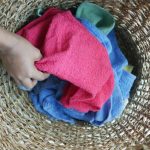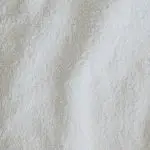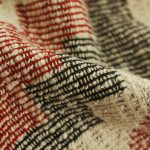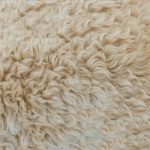When it comes to absorbency, you might be surprised by how microfiber and terry cloth stack up against each other. Microfiber can absorb up to seven times its weight in liquid, while terry cloth manages only four to five times that. This significant difference can affect your cleaning routine. But what does this mean for durability and maintenance? Understanding these factors could change how you approach your cleaning tasks and the materials you choose. Let's explore the implications of these absorbency rates further.
Table of Contents
Key Takeaways
- Microfiber absorbs up to seven times its weight, significantly outperforming terry cloth, which absorbs four to five times its weight.
- Microfiber's unique structure creates millions of pockets that enhance its ability to trap dirt and moisture effectively.
- Terry cloth's absorbency is good, but it may push dirt around instead of trapping it like microfiber does.
- Microfiber absorbs liquid almost instantly, whereas terry cloth takes longer to reach its maximum absorbency capacity.
Overview of Microfiber
Microfiber is often celebrated for its exceptional absorbency and ability to trap dust and dirt effectively. When you use microfiber cloths, you'll notice how they pick up particles that traditional materials might leave behind. This makes them an excellent choice for cleaning surfaces in your home, from kitchen counters to electronics.
What sets microfiber apart is its unique structure, composed of tiny fibers that are split into even smaller strands. These strands create millions of tiny pockets that can hold moisture and debris, making your cleaning tasks easier and more efficient.
It's not just about the cleaning, though; microfiber is also lightweight and durable, meaning it can withstand multiple wash cycles without losing its effectiveness.
Another benefit you'll appreciate is how microfiber can be used dry or damp, depending on your cleaning preference. When damp, it can lift even the most stubborn grime, while dry, it excels at dusting. Plus, it's often safe to use on various surfaces without scratching.
When you choose microfiber, you're opting for a versatile cleaning tool that delivers exceptional results every time.
Overview of Terry Cloth
Terry cloth is a highly absorbent fabric known for its looped design, which creates a plush texture perfect for drying and cleaning. This unique structure features numerous loops that enhance its ability to soak up moisture, making it a favorite in towels, bathrobes, and washcloths.
You'll find that the softness of terry cloth not only feels luxurious against your skin but also makes it effective at trapping dirt and debris when used for cleaning. Typically made from cotton or a cotton blend, terry cloth is durable and can withstand frequent washing.
It's often available in various colors and styles, allowing you to choose options that suit your taste and cleaning needs. You might also notice that terry cloth can come in different weights; heavier options tend to be more absorbent, while lighter ones dry faster.
In everyday use, terry cloth is versatile. Whether you're drying off after a shower or wiping down surfaces, this fabric gets the job done efficiently. Plus, it's easy to care for—most terry cloth items are machine-washable, making maintenance a breeze.
Absorbency Comparison
When it comes to absorbency, understanding the material composition of microfiber and terry cloth is key.
You'll find that each fabric performs differently in absorbency tests, which can impact how you use them in various scenarios.
Let's break down the differences to see which option might work best for your needs.
Material Composition Differences
The differences in material composition between microfiber and terry cloth play a crucial role in their absorbency capabilities.
Microfiber is made from synthetic materials, primarily polyester and polyamide, which are designed to have ultra-fine fibers. These tiny fibers create a large surface area, allowing microfiber to trap water and dirt more effectively. This unique structure leads to high absorbency, making it an excellent choice for cleaning tasks and drying.
On the other hand, terry cloth is typically made from cotton or a cotton blend. Its looped design creates a thicker texture, which can hold water effectively. The natural fibers in terry cloth offer good absorbency, but they may not match the efficiency of microfiber in certain situations. While terry cloth feels plush and soft against the skin, it can take longer to dry and might retain odors more than microfiber.
Ultimately, when you consider material composition, microfiber's synthetic fibers provide a distinct advantage in absorbency, while terry cloth's natural fibers offer their own benefits. Depending on your needs, both materials have unique properties that can affect their performance in various applications.
Absorbency Test Results
In a recent absorbency test, microfiber outperformed terry cloth, soaking up more liquid in less time. The results clearly showed that microfiber can absorb up to seven times its weight in water, while terry cloth typically absorbs only about four to five times its weight. This difference can make a significant impact when you need to clean up spills or dry surfaces quickly.
During the test, we measured how much water each fabric could absorb over a set period. Microfiber absorbed the liquid almost instantly, while terry cloth took longer to reach its maximum capacity. You'd likely notice this speed difference in practical situations, whether you're cleaning your kitchen or drying your car after a wash.
Additionally, microfiber's unique structure allows it to trap dirt and grime, enhancing its overall absorbency. On the other hand, terry cloth, while absorbent, tends to push some dirt around rather than completely capturing it.
If you're considering which fabric to use for tasks requiring high absorbency, these test results strongly favor microfiber. You'll find it more effective in keeping your surfaces dry and clean with less effort on your part.
Practical Usage Scenarios
Microfiber's superior absorbency makes it the go-to choice for various practical cleaning scenarios, from tackling kitchen spills to drying your car after a wash.
When you're faced with a liquid mess in the kitchen, a microfiber cloth quickly soaks up the spill, leaving surfaces dry and spotless. Its ability to trap dirt and grime means you won't just be moving it around; you'll actually be cleaning.
In the bathroom, microfiber shines when you're wiping down mirrors or counters. You can use it with just water, and it'll remove soap scum and stains effortlessly. If you're a pet owner, microfiber is perfect for cleaning up after your furry friends. Its high absorbency helps you manage any accidents quickly.
On the other hand, when you're using terry cloth, you might find it less effective in absorbing spills compared to microfiber. While it's great for drying dishes, it can leave behind some moisture.
In short, for everyday absorbency needs in cleaning, microfiber outperforms terry cloth, making it the better choice for various situations you encounter daily.
Durability and Longevity
When comparing durability and longevity, terry cloth often outlasts microfiber in heavy-duty cleaning tasks. Terry cloth's thicker loops provide a robust structure that can handle scrubbing and tough stains without fraying or losing integrity.
You'll find that for jobs like cleaning kitchens or scrubbing bathrooms, terry cloth stands up to repeated use better than microfiber.
On the other hand, while microfiber is great for light cleaning and dusting, it may wear out faster when subjected to rigorous scrubbing. The fine fibers can break down after multiple washings, especially if you're using them in abrasive environments.
If you're looking for longevity, terry cloth towels typically maintain their shape and absorbency over time, even with frequent washes. Microfiber, while effective, might start to lose its effectiveness sooner, especially with heavy use.
Ultimately, if you prioritize durability in your cleaning supplies, terry cloth is likely the better choice. You'll appreciate its strength for demanding tasks, ensuring you have a reliable tool that lasts through many cleaning sessions.
Cleaning and Maintenance
To keep your cleaning tools in top shape, understanding the proper cleaning and maintenance for both microfiber and terry cloth is important.
Microfiber is a fantastic fabric, but it requires some specific care. Always wash microfiber cloths separately from other fabrics to prevent lint transfer. Use cold or warm water and avoid fabric softeners, as they can clog the fibers and reduce absorbency. When drying, opt for a low heat setting or air dry, as high heat can damage the fibers.
On the other hand, terry cloth is generally more forgiving. You can wash it with other towels, but be mindful not to overload the washer, as that can hinder the cleaning process. Like microfiber, use warm water and don't use fabric softeners too often. They can diminish its absorbency over time. For drying, you can use a higher heat setting since terry cloth is more durable, but air drying is still a great option.
Regularly maintaining both types of cloths will extend their life and ensure they perform effectively when you're cleaning.
Best Uses for Each Fabric
When it comes to choosing the right fabric for your needs, understanding the best uses for microfiber and terry cloth can make a big difference.
Microfiber excels at cleaning and dusting due to its fine fibers.
In contrast, terry cloth shines in bath and personal care settings for its absorbency.
Let's explore how each fabric fits into your home and kitchen applications.
Ideal Cleaning Applications
What cleaning tasks benefit most from microfiber and terry cloth?
Microfiber shines when you're tackling dusting and cleaning delicate surfaces. Its fine fibers trap dirt and allergens effectively, making it perfect for electronics, glass, and polished surfaces. You'll find that using a microfiber cloth dampened with a little water can pick up grime without scratching, which is ideal for your countertops and appliances.
On the other hand, terry cloth is your go-to for heavy-duty cleaning tasks. Its thick, looped fibers absorb liquid exceptionally well, so it's great for mopping up spills or drying dishes. If you're washing your car, a terry cloth towel can help you soak up water quickly and efficiently, leaving your vehicle streak-free.
Additionally, if you're dealing with tough stains, terry cloth's texture offers a bit of scrubbing power without being too abrasive. When you need a reliable cloth for both absorption and scrubbing, terry cloth is your best bet.
Bath and Personal Care
Microfiber and terry cloth each have distinct advantages in bath and personal care, making them essential for different tasks in your routine.
Microfiber is incredibly soft and gentle, making it perfect for facial cleansing and applying skincare products. Its fine fibers can capture dirt and oil without irritating your skin, so when you want a gentle cleanse, reach for a microfiber cloth.
On the other hand, terry cloth shines when it comes to absorbency. It's ideal for bath towels and washcloths, soaking up water quickly after a shower or bath. When you need to wrap yourself in a plush towel that dries you off effectively, terry cloth is your go-to choice.
For personal care, consider using microfiber washcloths for removing makeup or for a refreshing wipe-down, while keeping terry cloth on hand for post-bath drying.
Each fabric serves its purpose, so having both in your bathroom can elevate your self-care routine. By choosing the right cloth for each task, you'll ensure optimal cleanliness and comfort in your bath and personal care practices.
Home and Kitchen Uses
Both microfiber and terry cloth have unique strengths that make them invaluable in home and kitchen settings. Microfiber's fine fibers create a dense surface that's perfect for cleaning surfaces without scratching. You can use it to wipe down countertops, appliances, and even delicate glassware. Its ability to trap dust and dirt means you'll spend less time cleaning and more time enjoying your space.
On the other hand, terry cloth shines when it comes to absorbency. Its looped texture holds moisture exceptionally well, making it ideal for drying dishes, hands, or spills. You'll find terry cloth towels are great for tasks like drying off produce after washing or handling hot cookware.
When it comes to your kitchen, consider using microfiber for scrubbing and polishing, while opting for terry cloth for drying and soaking up spills. Both fabrics complement each other, so having a mix of both in your home will ensure you're well-prepared for any cleaning or drying task.
Cost Considerations
When comparing costs, you'll find that microfiber tends to be more affordable upfront, while terry cloth may require a larger investment for higher-quality options. Microfiber products, like towels and cleaning cloths, are often priced lower due to their mass production and synthetic materials. This makes them appealing if you're on a budget or need to stock up on cleaning supplies.
However, don't overlook the long-term value. Terry cloth, especially when made from high-quality cotton, can be more durable and absorbent. While the initial cost might be higher, these towels often last longer, meaning you may not need to replace them as frequently. If you factor in longevity, the overall cost could even out over time.
Additionally, consider how each material fits into your lifestyle. If you frequently do laundry or require towels that withstand heavy use, investing in terry cloth could pay off. On the other hand, if you need something lightweight and quick-drying for occasional use, microfiber's lower cost might be the better choice.
Ultimately, think about your needs and how much you're willing to spend for quality versus quantity.
Frequently Asked Questions
Can Microfiber and Terry Cloth Be Used Interchangeably?
You can often use microfiber and terry cloth interchangeably for cleaning or drying, but their specific properties might make one better suited than the other for certain tasks. Consider your needs before choosing between them.
Are There Eco-Friendly Options for Microfiber and Terry Cloth?
Yes, there are eco-friendly options for both microfiber and terry cloth. Look for brands that use recycled materials or organic cotton. These alternatives minimize environmental impact while still providing effective cleaning solutions for your needs.
What Are the Environmental Impacts of Manufacturing These Fabrics?
When you consider the environmental impacts of manufacturing fabrics, you'll notice microfiber production often involves petroleum, while terry cloth typically uses cotton, which requires water and pesticides. Both have significant ecological footprints you should weigh carefully.
How Do Allergens Interact With Microfiber and Terry Cloth?
Allergens can cling to both microfiber and terry cloth. You'll find that microfiber traps dust and allergens effectively, while terry cloth may release them more easily during cleaning, impacting your indoor air quality.
Can I Use Bleach on Microfiber and Terry Cloth?
You shouldn't use bleach on microfiber, as it can damage the fibers and reduce its effectiveness. Terry cloth can handle bleach better, but it's still best to check the care label before using it.
- Tetron Fabric for Marine Applications: Durability and Use Cases - June 18, 2025
- Tetron Fabric for Outdoor Furniture: Weather Resistance and Care - June 18, 2025
- Tetron Fabric for Wall Coverings: Style and Application Tips - June 18, 2025







